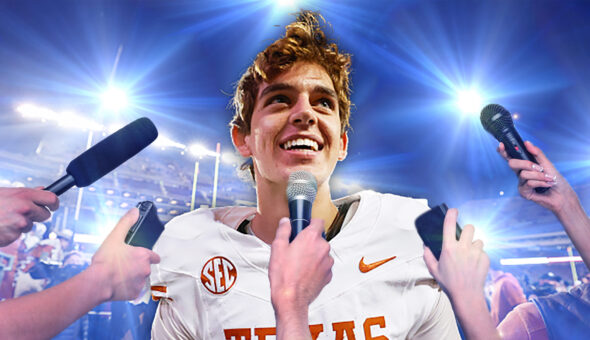Community colleges are often a supportive place for students to get a fresh academic start, build their college literacy and develop academically. Some community colleges are partnering with four-year institutions to aid full-time working students that may have other financial or personal responsibilities outside of school. When done effectively, those students can then transfer to partner institutions with a refined academic skill set that sets them up for success and balances the students’ needs and goals.
Statista reported that, as of 2022, there were 935 public community colleges in the United States. In 2020, approximately 4.7 million students were enrolled in public two-year postsecondary institutions across the U.S. In 2020, the most popular field of study for community college graduates was liberal arts and sciences, general studies and humanities. The same report noted that 402,669 associate degrees awarded at community colleges were in these fields of study, making up one-third of all attained degrees.
Research shows that, during the 2020-21 academic year, the total number of undergraduate credential earners increased by 1.1% or 39,000 to 3.7 million graduates. After a brief standstill in the previous year, graduate numbers began to rise again, and it’s critical to examine how universities are evolving with this trend.
Multidimensional Program Pathways
San Jacinto College in Pasadena, Texas, discusses post-completion opportunities for their students who go immediately into the workforce. In the petrochemical programs, companies participate in a “signing ceremony” at the end of the program and internship, where the students sign up for their jobs within those industries. Laurel Williamson, San Jacinto College’s deputy chancellor and president, said the community college also has multiple programs focused on transfer.
“One of our more recent projects is a partnership with Rice University called the Take Flight STEM Pathway program, which is for high-achieving San Jac students exploring science, technology, engineering and math fields,” said Williamson. “It has two goals: increasing the number of community college students engaged in STEM and positioning them to pursue higher degrees.”
Students within the Take Flight program can also participate in the Transfer Scholars Network, a program for academically talented students from nine community colleges across the United States. TSN is a virtual platform that connects the community college student with dedicated representatives from a group of top transfer institutions that have generous financial aid programs. These include Harvard, Yale, Amherst, Rice, Princeton, Swarthmore, Cornell and MIT.
“We also work with some universities that accept more than the 60 hours within an associate degree toward the bachelor’s degree so that students may be able to take up to 90 credits of the 120 needed for bachelor completion,” said Williamson. “This means 90 credits at the community college rates and only 30 at university prices.”
Other schools and programs have also found ways to accommodate their students’ unique learning situations and to provide resources or techniques for success.
Maria Lemaire completed an M.S. Ed in Literacy (Birth-Grade 6) through Hunter College in the fall of 2021. Lemaire said the school and program provided an incredibly supportive environment. NYS requires teachers to have their master’s in education or a related specialization, so Leamire and her classmates all had to be there to maintain their current certifications.
“My program was specifically for in-service, already certified and practicing teachers working in their own classrooms,” Lemaire said. “Everyone in the program had to be working while completing the degree, especially because coursework often was based on our real classroom work. So, I did not feel alone in the exhaustion and burnout that came with it.”
Lemaire noted that professors were also extremely forgiving on deadlines and would work to accommodate individual circumstances. Most of the classes went until 9:40 p.m. on school nights, and according to Lemaire, students often commuted from Long Island/Queens/Upstate to Hunter College on the Upper East Side. To accommodate the students, some professors did their best to complete class time before 9 p.m. to get people home and rested for school the next day.
“I felt a lot of support from the teachers we had because they were often ex-teachers or, in some cases, still practicing teachers or held educational leadership positions,” Lemaire continued. “So they were very empathetic to our experience as students and teachers. Since they knew that we had to work and we had to go to school, they usually spent the first 5-10 minutes of class allowing us to vent about what we’re dealing with in our work life.”
Situations May Vary
When asked how the program could have been improved, Lemaire said, “Hunter College could have prioritized in-service teachers’ schedules to shorten the class time and designed the course to make up the ‘hours’ in an asynchronous fashion because the early dismissal was not technically allowed.”
“While it was extremely difficult to make sure I made meetings and met deadlines, I wouldn’t change my experience for anything,” said a New York University Class of 2022 Stern School of Business graduate who wishes to remain anonymous, who we can call Dee. “I was able to apply what I was learning at school directly to my job in real-time and could see the benefits of the MBA immediately. It strengthened my time management, organization and prioritization skills immensely while concurrently making me appreciate the value of a dollar way more.”
I was able to apply what I was learning at school directly to my job in real time and could see the benefits of the MBA immediately.
Although universities may provide general guidance for success in their graduate programs, cases like Dee’s prove that college students make largely autonomous decisions due to the largely differing nature of their family circumstances, work history, lifestyle choices and personal responsibilities. Depending on the school students end up attending, the students may set their class schedules at universities and jobs with more supportive and flexible programs, or they may supplement the expenses needed to pursue higher education by working around their preset course times.
Dee said she mainly chose her program at NYU—above the hundreds of other top MBA programs in the country—for its specialized program, exciting location and esteemed pedigree. Similar to many other American graduate students, she was focused on making her dream come true while also making calculated decisions for her financial future.
“Hunter College was my first choice, and my only choice other than NYU,” said Lemaire, who also was looking to the future. “Hunter College’s School of Education is widely known as one of the top education programs in the country, and a lot of historical, current and ground-breaking educational research has come from them.”
Marketing to a Unique Audience
Federal data indicate that 7 million students were enrolled in public two-year colleges during the 2020–21 academic year, about 33% of undergraduate students. In the fall of 2020, approximately 4.8 million students were enrolled in public two-year colleges, equating to 29% of undergraduate students.
How do colleges market to people for whom higher education may not have even been a consideration?
“There are a couple of tactics that immediately come to mind,” Jones said. “Building industry partnerships with local employers across various industries is a great way to market to those populations that may want to upskill to advance in their company or shift into new roles.”
Jones noted that there are other tried and true methods, such as print and digital ads, but those marketing messages should focus on program flexibility, meaningful career connections and earning potential.
“If someone has not considered college before, the message needs to be clear that it would be worth their effort,” said Jones.
Community college is an affordable option for those who have ambitions of obtaining a bachelor’s or master’s degree. However, there is an entirely separate population who is not even aware of the more accessible option of community college and is turned off by the high cost of many traditional four-year U.S. colleges and universities. These students are equally important to reach in local community colleges and their efforts.
“We have Outreach Recruiters who visit high schools and talk with students who would traditionally not consider college after high school completion,” added Williamson. “Approximately 50% of graduating seniors in our service area do not go to any post-secondary institution. We work daily with our high school partners to establish a college-going culture within the high schools, even as early as middle and elementary school.”
In the 2018-19 academic year, 55% of Hispanic undergraduates were enrolled at community colleges, compared with 45% of Asian undergraduates, 44% of Black undergraduates and 41% of White undergraduates. During the past four years, enrollment numbers have fluctuated for community colleges, with male enrollment increasing and female enrollment decreasing. According to the National Student Clearinghouse Research Center, Hispanic and Asian student enrollment has increased, while there have been national declines in White and Black undergraduate enrollment. As a community with many Hispanic and Vietnamese families, San Jacinto College has experienced this shift in enrollment demographics.
“We make sure that our marketing materials are in both English and Spanish, and many are also in Vietnamese; the prospective students may speak English, but often parents and family members do not,” said Williamson. “Because attending college is often a family affair, it is important that families understand the demands and requirements higher education may entail.”
Challenges for Working Students
At schools where many students are working full-time, there are pathways present for students whose responsibilities extend beyond the classroom. Success can often be attributed to the flexibility of the program and the open-mindedness of the professors and faculty.
“I had specific professors and advisors who knew of my particular situation and were lenient with deadlines and how often I needed to be in class in person to help with balancing,” Dee remembered.
Dee’s program at New York University’s Stern School of Business discouraged students from working during the program, but that did not stop some of her professors from being flexible when she needed it.
“We had a part-time MBA program as well as an executive MBA program that ran concurrently with mine, and I often had classes where there were people who had full-time jobs, at least in the winter and the spring,” said Dee. “So in those classes, I found professors to be much more flexible and helpful.”
Editor’s note: This article is a two-part series by Ankita Bhanot. Part A explored the reasons students may need to juggle work and school and how institutions are striving—or failing—to meet those demands.









